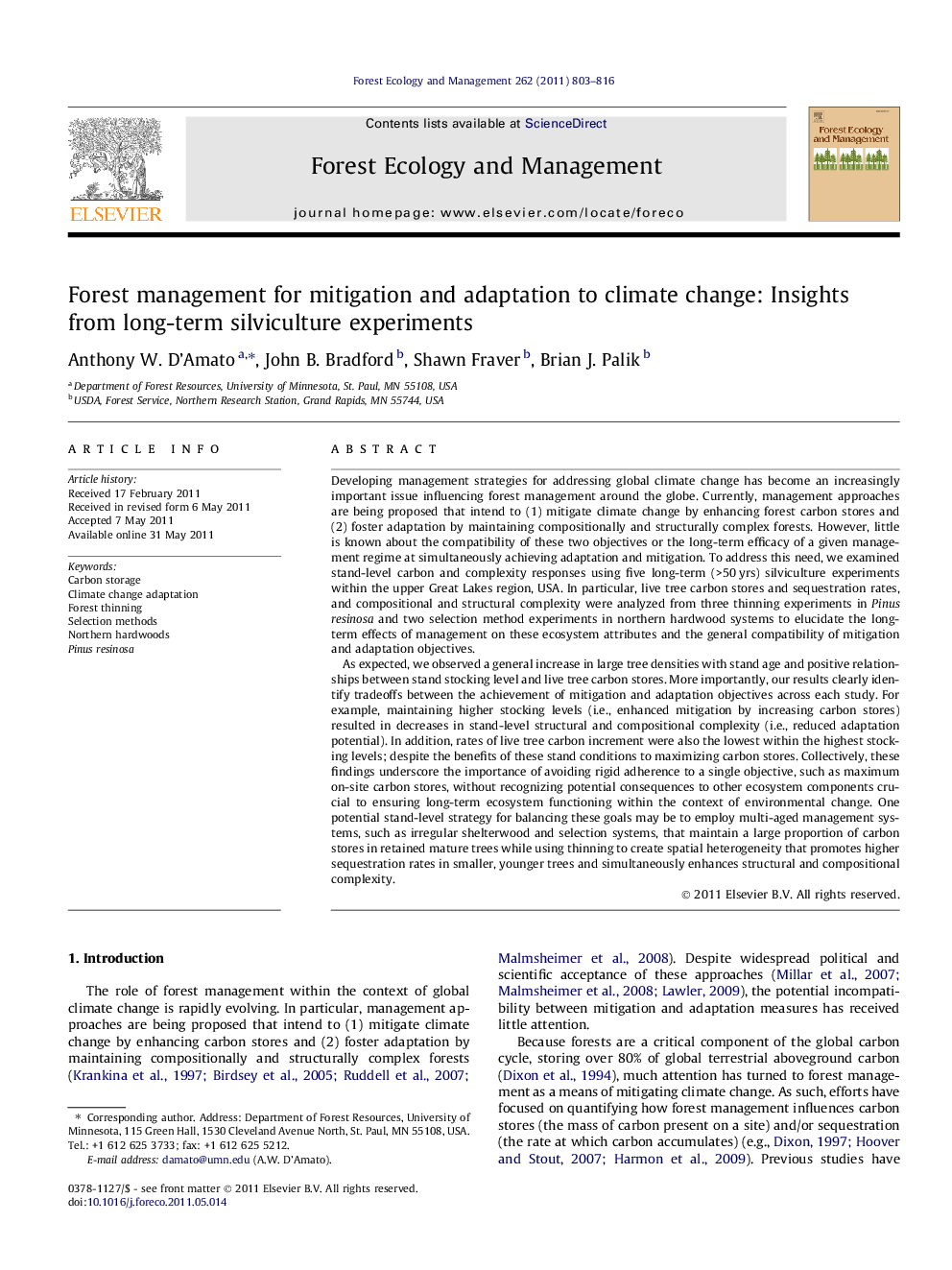| کد مقاله | کد نشریه | سال انتشار | مقاله انگلیسی | نسخه تمام متن |
|---|---|---|---|---|
| 88071 | 159281 | 2011 | 14 صفحه PDF | دانلود رایگان |

Developing management strategies for addressing global climate change has become an increasingly important issue influencing forest management around the globe. Currently, management approaches are being proposed that intend to (1) mitigate climate change by enhancing forest carbon stores and (2) foster adaptation by maintaining compositionally and structurally complex forests. However, little is known about the compatibility of these two objectives or the long-term efficacy of a given management regime at simultaneously achieving adaptation and mitigation. To address this need, we examined stand-level carbon and complexity responses using five long-term (>50 yrs) silviculture experiments within the upper Great Lakes region, USA. In particular, live tree carbon stores and sequestration rates, and compositional and structural complexity were analyzed from three thinning experiments in Pinus resinosa and two selection method experiments in northern hardwood systems to elucidate the long-term effects of management on these ecosystem attributes and the general compatibility of mitigation and adaptation objectives.As expected, we observed a general increase in large tree densities with stand age and positive relationships between stand stocking level and live tree carbon stores. More importantly, our results clearly identify tradeoffs between the achievement of mitigation and adaptation objectives across each study. For example, maintaining higher stocking levels (i.e., enhanced mitigation by increasing carbon stores) resulted in decreases in stand-level structural and compositional complexity (i.e., reduced adaptation potential). In addition, rates of live tree carbon increment were also the lowest within the highest stocking levels; despite the benefits of these stand conditions to maximizing carbon stores. Collectively, these findings underscore the importance of avoiding rigid adherence to a single objective, such as maximum on-site carbon stores, without recognizing potential consequences to other ecosystem components crucial to ensuring long-term ecosystem functioning within the context of environmental change. One potential stand-level strategy for balancing these goals may be to employ multi-aged management systems, such as irregular shelterwood and selection systems, that maintain a large proportion of carbon stores in retained mature trees while using thinning to create spatial heterogeneity that promotes higher sequestration rates in smaller, younger trees and simultaneously enhances structural and compositional complexity.
► We examine the effects of silviculture treatments on adaptation and mitigation potential.
► Increasing age and stocking levels increases large tree densities and carbon stores.
► Tradeoffs exist between the achievement of mitigation and adaptation objectives.
► Enhancing carbon stores may result in decreases in the adaptation potential.
► Levels of live carbon increment are the lowest within the highest stocking levels.
Journal: Forest Ecology and Management - Volume 262, Issue 5, 1 September 2011, Pages 803–816